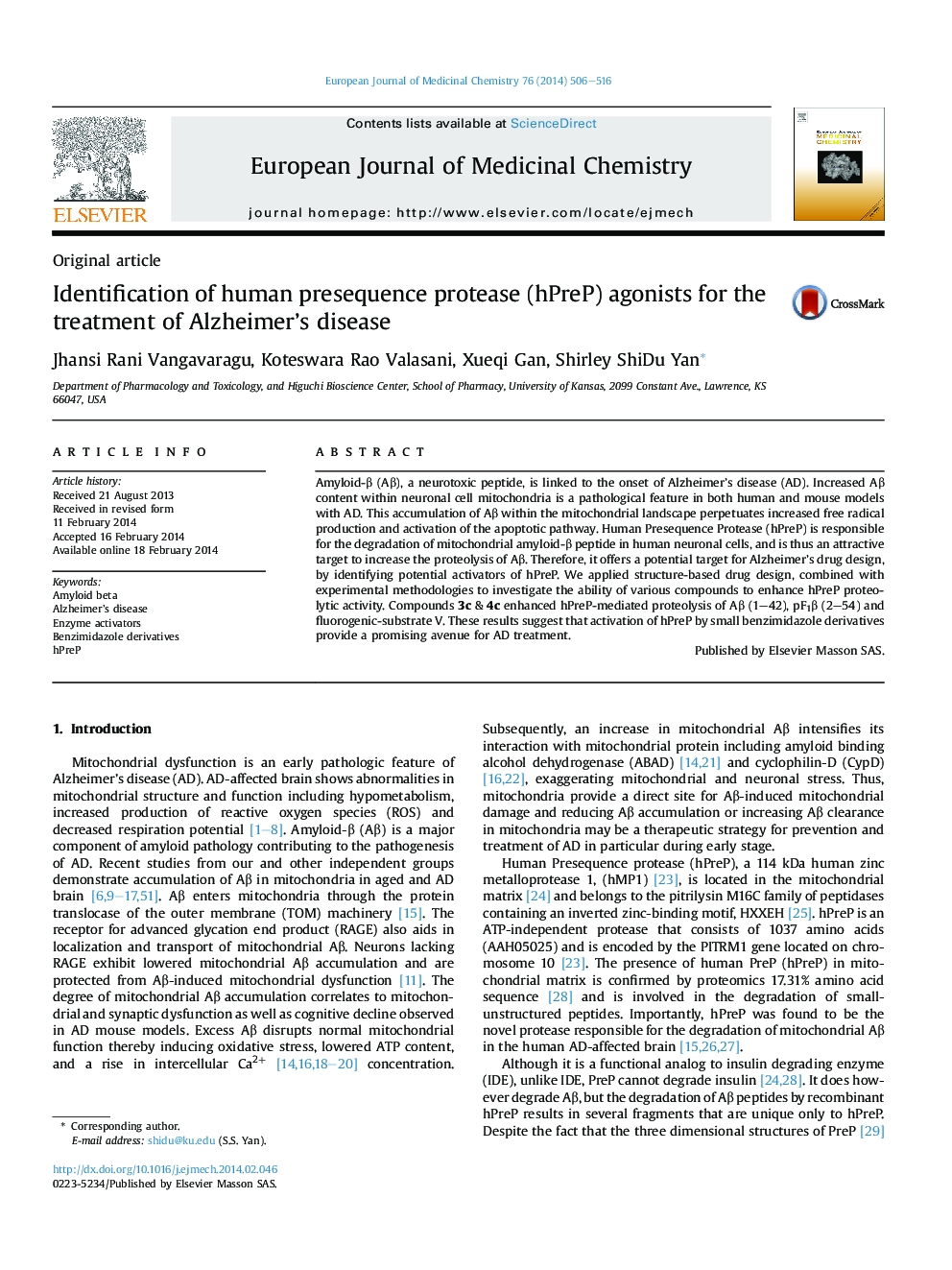| Article ID | Journal | Published Year | Pages | File Type |
|---|---|---|---|---|
| 1394259 | European Journal of Medicinal Chemistry | 2014 | 11 Pages |
•We have deigned and synthesized hPreP antagonists for treatment of Alzheimer's Disease.•Title compounds enhanced hPreP-mediated proteolysis of amyloid beta (Aβ).•Aβ (1–42), pF1β (2–54) and fluorogenic-substrate V were used as substrates of hPreP.•3c & 4c showed potent enhancement of hPreP-mediated proteolysis various substrates in vitro.
Amyloid-β (Aβ), a neurotoxic peptide, is linked to the onset of Alzheimer's disease (AD). Increased Aβ content within neuronal cell mitochondria is a pathological feature in both human and mouse models with AD. This accumulation of Aβ within the mitochondrial landscape perpetuates increased free radical production and activation of the apoptotic pathway. Human Presequence Protease (hPreP) is responsible for the degradation of mitochondrial amyloid-β peptide in human neuronal cells, and is thus an attractive target to increase the proteolysis of Aβ. Therefore, it offers a potential target for Alzheimer's drug design, by identifying potential activators of hPreP. We applied structure-based drug design, combined with experimental methodologies to investigate the ability of various compounds to enhance hPreP proteolytic activity. Compounds 3c & 4c enhanced hPreP-mediated proteolysis of Aβ (1–42), pF1β (2–54) and fluorogenic-substrate V. These results suggest that activation of hPreP by small benzimidazole derivatives provide a promising avenue for AD treatment.
Graphical abstractStructure-based design was used to identify the activators of hPreP and was found to be the novel protease responsible for the degradation of mitochondrial Aβ in the human AD-affected brain.Figure optionsDownload full-size imageDownload as PowerPoint slide
